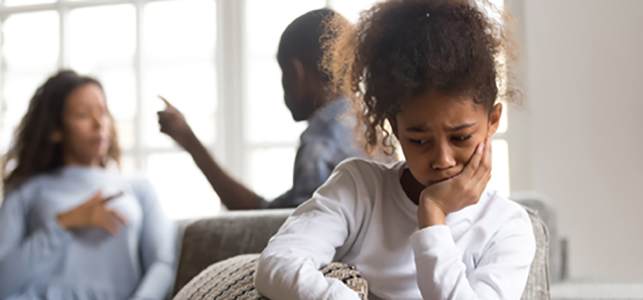
The decision to divorce is rarely an easy one. It involves heartbreak and change – not just for you as a couple, but for the whole family. Psychologist Dr. Michele Cosby shares some ways parents can make the process a little easier for kids.
Children react differently to learning their parents plan to divorce. Make sharing the news as comforting as possible by:
The emotional impact of divorce varies based on the age, developmental stage and unique personality of each child. Young children may not understand why they’ll have two homes or worry parents may stop loving them like they stopped loving each other. Grade school age children may worry the divorce is their fault because they misbehaved or did something wrong. Teens may become angry at the changes, blaming or resenting one or both parents for disrupting the family system.
The specific family situation can also factor into kids’ emotional responses to the news. Divorce may actually result in relief if it means less chaos, tension and stress in the home.
No matter the circumstances, you can show your child support by:
Think about the ways your child has handled other stressors in their life to help in planning for the best support.
 The first year after divorce is often the toughest as everyone is acclimating to new routines, living arrangements and experiences. Holidays, birthdays and vacations will be different from the way they were before. Seeing parents adjust to single life or new partners, the possibility of new marriages and step siblings will require additional adaptations eventually.
The first year after divorce is often the toughest as everyone is acclimating to new routines, living arrangements and experiences. Holidays, birthdays and vacations will be different from the way they were before. Seeing parents adjust to single life or new partners, the possibility of new marriages and step siblings will require additional adaptations eventually.
A small percentage of kids experience anger and anxiety longer term following divorce. In this case, a mental health professional can help with coping skills and acceptance. There's no shame in seeking advice from a therapist (your own or your child's) and even keeping school teachers or other important adults in your child's life informed. Although it’s a process, most kids adjust well and have happy, healthy childhoods following divorce.